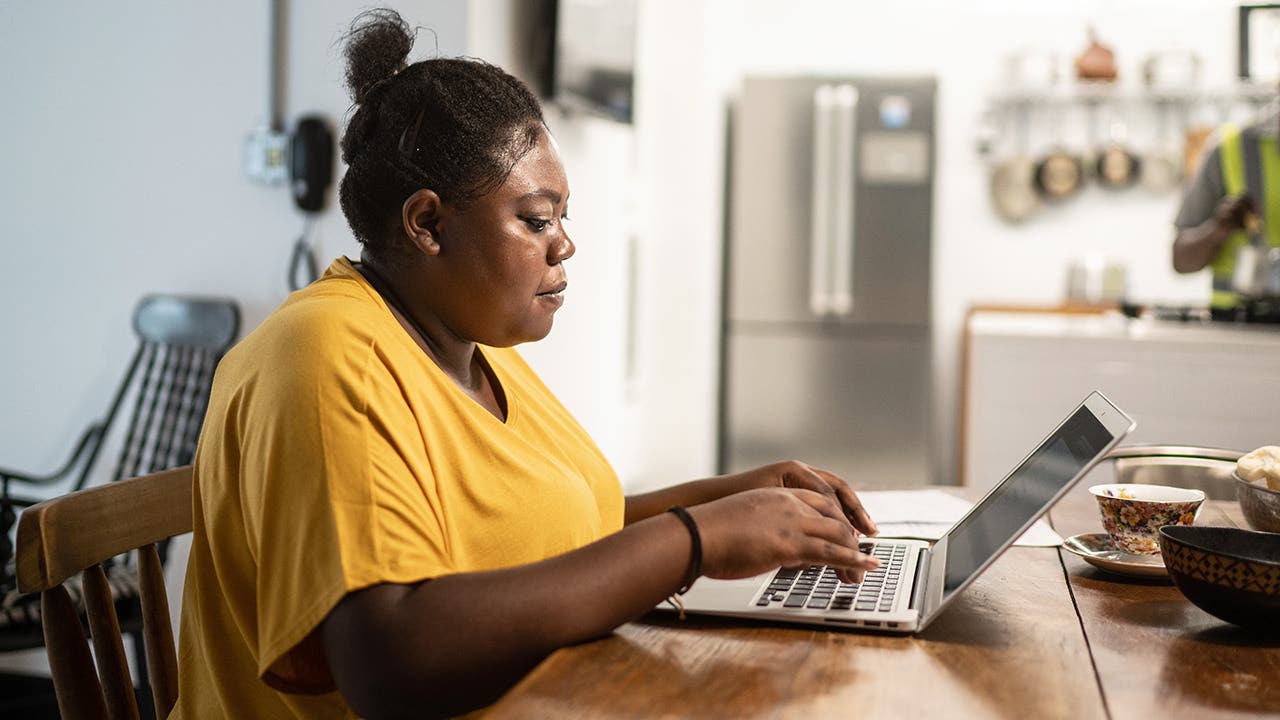How to switch to a new bank or credit union

Key takeaways
- Take the time to research and compare banks to find the best fit for your needs and preferences. Consider factors like fees, interest rates, digital tools and customer service.
- Before making the switch, make a list of all your automatic transactions and direct deposits so you can smoothly redirect them to your new account.
- To avoid any missed payments or fees, keep your old account open for a bit after setting up your new one, just to make sure everything transitions over correctly.
Are you thinking about breaking up with your bank? Maybe you’re moving to a new town, fed up with high fees, or just ready for a change. Whatever your reason, switching to a new bank or credit union doesn’t have to be a huge headache. With a little planning and organization, you can make the transition without missing a beat.
In this step-by-step guide, we’ll walk you through the process of changing banks, from shopping around for a new institution to closing out your old account. How to change banks
Follow these six steps for a smooth transition to a new bank or credit union:
1. Find a new bank or credit union
Just like with any relationship, finding the right bank match takes some work. Start by thinking about what you really want out of a banking partner.
Is it low fees, awesome digital tools, great interest rates or all of the above? Make a list of your must-haves, and then start comparing your options. Bankrate’s banking reviews are a good starting point to help you research the difference between accounts at a variety of banks.
Consider factors like:
- Monthly maintenance fees
- ATM access and fees
- Overdraft policies and fees
- Interest rates on checking and savings accounts
- Minimum balance requirements
- Mobile app features and user experience
- Branch and customer service accessibility
Expert tip: Consider your banking habits
“If you need a safe deposit box, then an online or neobank won’t work. If you’re looking for lower fees or better rates and do all of your banking digitally, then you’re not limited to what is in your local area.”
— Greg McBride, CFA, Bankrate chief financial analyst
2. Choose your next account
Once you’ve found a bank or credit union that checks all your boxes, it’s time to choose your new accounts. Take a close look at the different account types available and their features and requirements:
Consider how the accounts work together and if they fit your needs and financial goals. For example, you might pair an interest-earning checking account with a high-yield savings account to maximize your returns.
Looking for a new banking relationship? Check out our roundup of the best checking accounts and best savings accounts to start your search.
3. Note your automatic transactions and direct deposits
Before you take the plunge and open your new account, do a bit of financial recon.
You may have your paycheck, dividends and other sources of income automatically deposited into your checking account. Additionally, there may be automated payments on a monthly basis for cell phone charges, utilities, subscription services, charitable contributions and other goods and services.
To avoid complications, make a list of these incoming and outgoing transactions from the past 12 months — you’ll need to transfer them to your new account once it’s set up. This may include:
- Direct deposits (payroll, government benefits, investment income)
- Automatic bill payments (utilities, mortgage/rent, credit cards)
- Subscription services (streaming, memberships)
- Automatic transfers to savings or investment accounts
- Linked payment apps (PayPal, Venmo, Cash App)
- Recurring donations
- Automatic insurance payments (may be monthly, quarterly or annual)
Some automated transactions may occur quarterly, semiannually or annually, so be sure to track those as well. Also note any linked accounts, such as funds transferred each month to an individual retirement account or a health savings account.
Getting all your automated payments sorted may take a while, depending on how much you rely on services like online bill pay. But making sure you’ve accounted for all your regular transactions is worth the effort, to avoid bounced checks or refused payments that may result in fees.
4. Open your new account
After your research is done, opening an account at the bank you’ve selected is the easy part — and doesn’t even require stepping foot in a bank.
The steps are similar whether you open an account online or at a branch: You provide information such as your Social Security number, date of birth and current address. You’ll typically need:
- A valid government-issued photo ID (driver’s license or passport)
- Your Social Security number or Individual Taxpayer Identification Number
- Contact information (phone, email, address)
- Initial deposit (check, electronic transfer, or cash if in-person)
- Employment information (for some banks)
Once your account is up and running, take a few minutes to set up online banking access, order checks and/or a debit card and download the mobile app. Need more help? Check out our step-by-step guide to opening a bank account.
5. Redirect your payments and direct deposits
Here’s where that list of transactions you made is going to come in handy. To switch your recurring bill payments, log in to each service provider’s website and update your payment info to your new account. For direct deposits, contact your employer or other payment sources to give them your new account and routing numbers.
Don’t forget to update any links between your old account and other financial accounts, like investment or loan payment accounts. A little time spent updating this info now can save you a lot of stress (and potential fees) down the line.
6. Close your old account
Before you cut ties with your old bank completely, it’s smart to leave that account open for one or two extra statement cycles. This gives you a buffer to make sure any straggling transactions or payments have cleared and nothing gets lost in the shuffle.
Once you’re certain everything has transitioned to your new account, it’s time to say goodbye:
- Transfer any remaining balance to your new account electronically or via check/wire.
- Contact your old bank to request to close the account, and get written confirmation.
- Dispose of any lingering checks and debit cards tied to the closed account — shred them or cut them up to prevent fraud.
Is changing banks right for you?
Switching banks can feel like a big undertaking, but sometimes it’s the right move for your finances. It could be a smart choice if:
- You’re paying too much in fees at your current bank.
- You’re not earning competitive interest rates on your accounts.
- Your bank’s digital tools and user experience are lacking.
- You’ve moved and need better branch or ATM access in your new area.
- Your banking needs have changed (like needing a joint account or higher transaction limits).
Consider your priorities and pain points with your current bank, and weigh them against the potential benefits and hassles of switching.
Thinking about switching banks but not sure if it’s worth the effort? Here are five reasons why switching banks may be worth it.
FAQs about changing banks
Switching banks takes thought and planning. Here are answers to some common questions.
Does changing banks affect your credit score?
In most cases, switching banks won’t have a major impact on your credit score. However, if your new bank does a hard pull on your credit during the application process, you might see a small, temporary dip in your score. This is usually minimal and bounces back within a few months.
Is it a good idea to switch banks when you move?
It depends on your bank and your new location. If your bank has branches or ATM access where you’re moving, it might not be necessary to switch. But if you’ll be far from any physical branches or your bank limits certain account features based on your address, changing to a local bank could make sense.
How long does switching banks usually take?
The timeline for switching banks can vary depending on your specific financial situation and how many accounts and transactions you need to move. Generally, plan for the process to take a few weeks to a month to avoid any rushed mistakes or missed payments. Start the process well before you want to fully cut over to the new bank.
The bottom line
Breaking up with your bank isn’t always easy. But with the right planning, switching to a new bank or credit union can be a smart move for your finances.
Remember to do your homework, keep your old account open while you transition and don’t be afraid to lean on your new bank’s customer support team if you hit any snags. A little short-term effort can lead to long-term benefits like lower fees, better interest rates and an improved overall banking experience.
You may also like

How to change your student loan servicer

The 10 largest credit unions in the US




